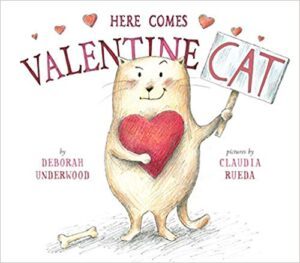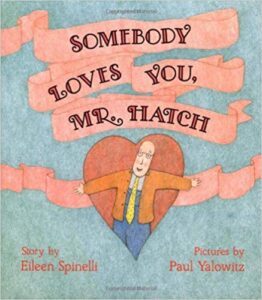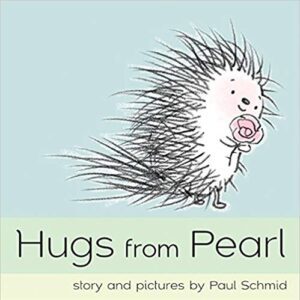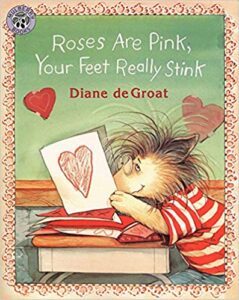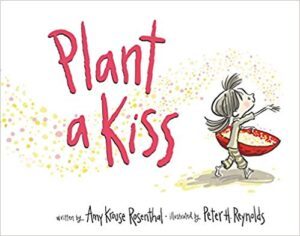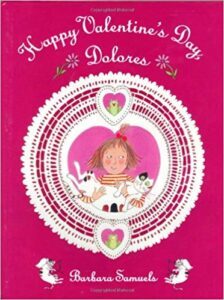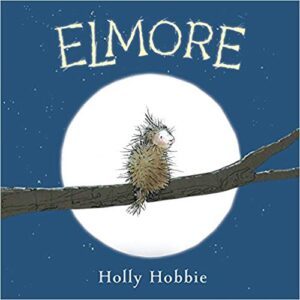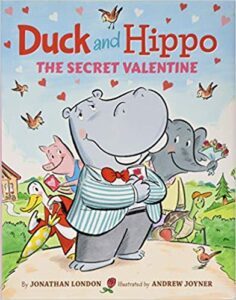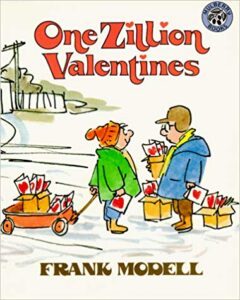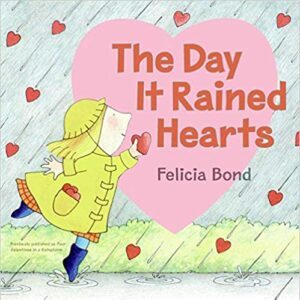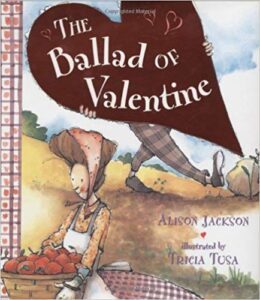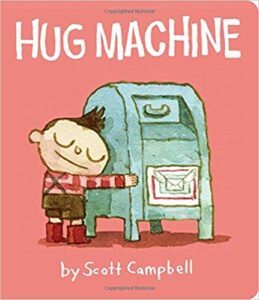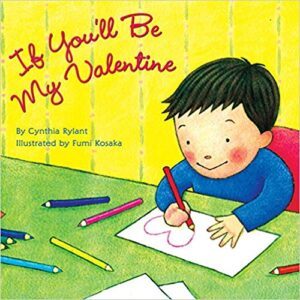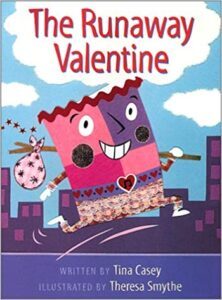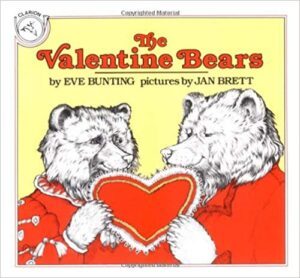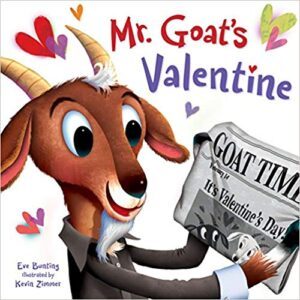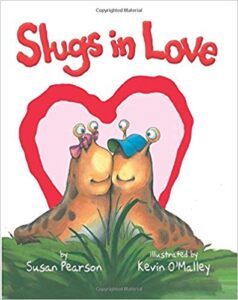Anna Geiger's Blog, page 35
February 10, 2020
5 Shared reading mistakes to avoid
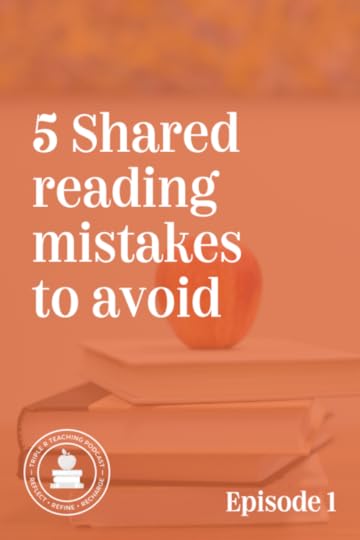
TRT #1: 5 Shared reading mistakes to avoid
Does shared reading feel like an “extra” that you can’t squeeze into your school day?
I get that your days are busy (boy, do I get it!), but shared reading is an essential piece of the balanced literacy model.
The good news is that it only takes 10 minutes a day! In this episode you’ll learn 5 common mistakes to avoid as you tackle this enjoyable part of the school day.
Click the play button to listen
Remember that you can hover over the player to speed up or slow down the audio.
Links mentioned in this episode
Shared reading blog series
Membership training: How to do shared reading in K-2
Membership printables: Shared reading 5-day lesson plans
Other recommended resources and supplies
Alison Ryan’s online workshops��
Reading A-Z.com
Document camera
Subscribe & review in iTunes
Are you subscribed to my podcast? If you���re not, I want to encourage you to do that today. I don���t want you to miss an episode!����Click here to subscribe in iTunes!
Now if you have an extra minute, I would be really grateful if you left me a review over on��iTunes��, too. Those reviews help other people find my podcast, and they���re also fun for me to go in and read.��Just click here to review.��You���ll need to click to ���Listen on Apple Podcasts��� and ���write a review.����� Let me know what you appreciate about the podcast. Thank you!
There are many ways to listen ���
Subscribe in iTunes
Subscribe in Spotify��
Subscribe in Stitcher
No time to listen? Read it instead!
Download a transcript
Looking for the entire podcast library?
Click here to see all episodes.
© 2020, Anna G. All rights reserved.
The post 5 Shared reading mistakes to avoid appeared first on The Measured Mom.
Introducing Triple R Teaching – my new podcast!
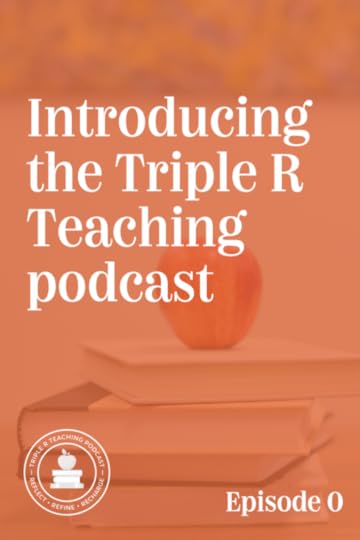
It’s time to reignite your passion for teaching!
My new podcast Triple R Teaching, will help you reflect, refine, and recharge.
The podcast will provide simple strategies and practical tips for PreK-grade 3 educators.�� I’ll show you how to make small changes to improve how you teach math and literacy.
Look forward to episodes about shared reading, guided reading, and other elements of balanced literacy.
Expect episodes that will help you implement guided math – from number talks to math centers.
Anticipate a series about teaching writing with the writing workshop approach.
We���ll dive into spelling, phonics, sight words, and other important topics in early education.
Listen more about me and how I’ll serve you through this podcast with the introductory episode:
Subscribe & review in iTunes
Are you subscribed to my podcast? If you���re not, I want to encourage you to do that today. I don���t want you to miss an episode!�� Click here to subscribe in iTunes!
Now if you have an extra minute, I would be really grateful if you left me a review over on iTunes , too. Those reviews help other people find my podcast, and they���re also fun for me to go in and read. Just click here to review. You’ll need to click to “Listen on Apple Podcasts” and “write a review.”�� Let me know what you appreciate about the podcast. Thank you!
There are many ways to listen …
Subscribe in iTunes
Subscribe in Spotify��
Subscribe in Stitcher
No time to listen? Read it instead!
Download a transcript
Looking for the entire podcast library?
Click here to see all episodes.
© 2020, Anna G. All rights reserved.
The post Introducing Triple R Teaching – my new podcast! appeared first on The Measured Mom.
February 4, 2020
How to teach fluency during shared reading
Since you and your students will read the same text multiple times in a week, shared reading is an excellent time for building fluency.
Here are some tips that will show you how to teach fluency during shared reading.
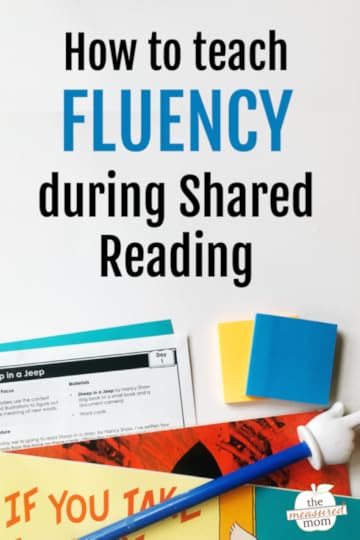
We’ve reached the final post in my 5-part series about shared reading!
Today we’re talking��fluency.
We often call fluency the bridge to comprehension. If students don���t have to concentrate on decoding the words, they have more brain space to focus on what the text means.
Remember that there are three characteristics of fluent readers:
They read the text accurately.
They read at an appropriate pace.
They read with proper expression.
Shared reading can help with��all of these!
How to use shared reading to build fluency
Teach the word-solving skills your students will need as they advance to higher levels in reading.
As you observe your students during small group reading lessons, notice what’s tripping them up as they solve difficult words. Then teach word-solving skills during shared reading to build fluency. (If this sounds a lot like phonics, you’re right – but kids need phonics skills to be fluent readers.)
During shared reading, highlight sight words your students are learning at other parts of the day.
You’re surely teaching sight words in your reading block, so here’s a time to give them extra special attention – in��context.
Highlight sight words with highlighter tape .
Underline sight words with Wikki Stix .
Write sight words on index cards, and have students match them to the text in the big book.
Model fluent reading.
Bring out your inner actor as you show your students what it means to read clearly, at an appropriate speed, and with proper expression.
Vary how you read the text with your students.
Choral read (read together).
Echo read (you read, and they read after you).
You read one character’s part, and they read another.
You read one side of the page, and they read another.
Focus on specific fluency skills.
As I prepare shared reading lessons for The Measured Mom Plus, I like to focus on a specific fluency skill one day each week.
Here are some fluency skills you could teach.
Read like we talk, not word-by-word.
Scoop up words as you read in phrases.
Change your voice to match the emotions of the characters.
Vary the pace of your reading to match the events of the story.
Slow down as you’re reading more difficult nonfiction passages.
Make your voice match the ending punctuation.
Have you seen the whole shared reading series?
��Part 1 ��Part 2 ��Part 3 ��Part 4 ��Part 5
And check out the mini-course
in The Measured Mom Plus!
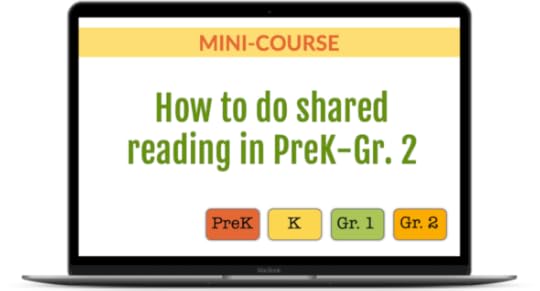
Log in to your account at The Measured Mom Plus and view my mini-course about shared reading.
Learn exactly what to teach during shared reading lessons.
Find out how to keep the same text from getting boring.
Get 5-day shared reading lesson plans for multiple books and grade levels!
© 2020, Anna G. All rights reserved.
The post How to teach fluency during shared reading appeared first on The Measured Mom.
February 2, 2020
The best Valentine’s Day books to read aloud
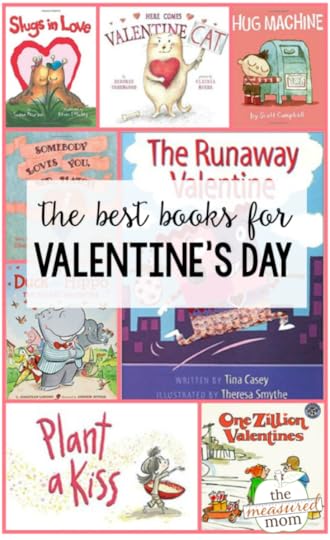
Looking for books to read aloud to your learners on Valentine’s Day? I’ve put together a list of our favorites just for you!
Here Comes Valentine Cat,��by Deborah Underwood
Please promise me you’ll find this book at your library and read it – even if it’s just to yourself! It’s my absolutely favorite on this list. In this book the narrator speaks directly to Cat, who feels that Valentine’s Day is much too mushy to celebrate. The cat communicates through signboards and facial expressions, and the book is both hilarious and heart-warming. It’s also a great book for teaching inferences. Recommended!
Somebody Loves You, Mr. Hatch, by Eileen Spinelli
This is a treasure of a book that��everyone should read! It’s about lonely Mr. Hatch, who eats by himself during his lunch break at the shoelace factory – indeed, he never speaks to anyone. All that changes when he receives a heart-shaped box of chocolates from a secret admirer. Suddenly Mr. Hatch becomes everyone’s favorite neighbor … until the sad moment when he discovers that the delivery was a mistake. Such a great book!��(And if you’re a member of The Measured Mom Plus, be sure to check out the read aloud guide in my collection of Valentine’s Day interactive read alouds.)
Hugs from Pearl, by Paul Schmid
Pearl is a sweet little porcupine who loves to give hugs. Even though her friends are nice about it (and her teacher has a ready supply of Band-Aids), Pearl’s hugs are ouchy. What can a friendly little porcupine do? Pearl finally arrives at a solution. Such a sweet book!
Roses Are Red, Your Feet Really Stink, by Diane DeGroat
This is a good book about taking responsibility for your actions. As Gilbert writes valentine poems for his classmates, he writes two rude poems for students he doesn’t like –��and signs them as if someone else wrote them. Before long, everything is topsy-turvy, and Gilbert has some explaining to do. Thankfully, everything is sorted out in the end.
Plant a Kiss,��by Amy Krouse Rosenthal
This is a simple but powerful book about the importance of spreading love wherever we go. I love the simple illustrations and the added texture. Even though the book is very simple (and little ones will enjoy it), its abstract message is very appropriate for older listeners. Use it to start a discussion about the meaning of the book.
Happy Valentine’s Day, Dolores, by Barbara Samuels
Dolores is an irrepressible little girl who means well but doesn’t always make the best decisions. In this book, her bad snooping habit leads her to find a secret Valentine’s Day gift that her older sister has hidden away. Whom is it for? Even though Dolores’ snooping and taking is wrong (which you can discuss as you read it), the book highlights a loving relationship between an older and younger sister – a rarity in children’s literature, and one I’m happy to see.
Elmore, by Holly Hobbie
In this sweet book. Elmore the porcupine has a hard time making friends – for obvious reasons. In the end, this lonely porcupine finds a way into his friends’ hearts. (A read aloud guide for this book can be found in the The Measured Mom Plus.)
Duck Hippo: The Secret Valentine,��by Jonathan London
While I didn’t find the story particularly engaging, the vintage illustrations are adorable, and both my Four and almost-Six enjoyed this story about Duck’s plan to surprise all her friends with a Valentine’s Day party. I love that the book focuses on friendship (not romance) as the heart of Valentine’s Day.
One Zillion Valentines, by Frank Modell
In this appealing vintage book (1981), Marvin informs his friend Milton that “Valentines aren’t just for girls. Valentines are for everybody.” These two inventive boys create a “zillion” valentines to slip under doors and share with neighbors. The cartoony illustrations are a plus, and kids will appreciate this non-sappy Valentine’s Day story.
The Day It Rained Hearts,��by Felicia Bond
This gentle book about a little girl who catches raining hearts. She uses them to create special valentines for her animal friends. The story is nice, but the illustrations (by the illustrator of the��If You Give a Mouse a Cookie books), steal the show.
The Ballad of Valentine, by Alison Jackson
I love books you can sing, so I adore this Valentine book set to the tune of the American folk song,��Clementine. Set in a canyon in the west, a lovesick admirer never gives up sending messages to the object of his affection. But for a variety of reasons (a cyclone, a blizzard, etc.) the messages never reach the girl named Valentine. While a lot of the humor was over my preschooler’s head, I loved this one. The hilarious pictures add a lot to the story.
Hug Machine,��by Scott Campbell
Oh my – what a wonderful book for little listeners! The Hug Machine is actually a little boy (the narrator of the story) who hugs everything he sees – from family members to strangers, from animals to inanimate objects. The pictures are adorable, and if you’re lucky your preschooler will turn into a Hug Machine as well … it’s been so fun to see my little guy tearing through the house giving hugs while reciting the book!
If You’ll Be My Valentine,��by Cynthia Rylant
If you’re looking for a Valentine’s Day book that will appear to young preschoolers, try this one. Older children will likely find it babyish, but the sweet pictures and rhymes will delight young listeners.
The Runaway Valentine,��by Tina Casey
Victor is the most beautiful valentine on the shelf, until he falls off the rack and gets swept into a corner. When he sets out on his own, Victor quickly becomes a ragged piece of paper. But amazingly, one person after another finds that Victor is just what they were looking for. The happy ending brings all the characters together. What a neat book! (This is also included in the membership’s Valentine’s Day read aloud guides.)
The Valentine Bears,��by Eve Bunting
Bunting’s lovely storytelling and Jan Brett’s beautiful illustrations come together in this lovely vintage book (1983) about two hibernating bears who interrupt their sleep to celebrate Valentine’s Day.�� A gentle and beautiful story. (Yes, I know bears aren’t true hibernators, but it’s still a cute book.)
Mr. Goat’s Valentine,��by Eve Bunting
Mr. Goat is searching for Valentine’s Day gifts for his first love. The gifts aren’t exactly conventional (weeds in a can and rotten eggs), but apparently Goat’s mother (his first love) isn’t too particular. It’s a a sweet book, but I didn’t feel it matched the quality storytelling we usually get from Eve Bunting.
Slugs in Love, by Susan Pearson
I am very anti-slug (thanks to finding way too many of them in our Virginia garden as a child), but this book is adorable.�� Marylou is a shy slug who wants Herbie to notice her. But even though she leaves him poems everywhere she goes (written in slime, of course), it takes the whole book before the two slugs finally meet. Who knew that a love story about slugs would be a winner?
© 2020, Anna G. All rights reserved.
The post The best Valentine’s Day books to read aloud appeared first on The Measured Mom.
January 28, 2020
How to teach comprehension during shared reading
Shared reading is an essential piece of balanced literacy. We can use it to teach our students the skills they’ll need as they advance to higher levels in reading.
In today’s post I’m sharing tips for teaching reading comprehension during your shared reading lessons.

Have you been following along in my series about shared reading?
In Week One, I explained what shared reading is.
In Week Two, I gave you an editable shared reading lesson template .
In Week Three, I showed you how to teach phonics within your shared reading lessons.
Today I’d like to show you how you can use your shared reading lessons to build comprehension.
How to use shared reading to build comprehension
Step 1 – Let the text guide you as you determine what comprehension skills and strategies to teach.
As I prepare shared reading lessons for The Measured Mom Plus, I consider what flows naturally from the text.
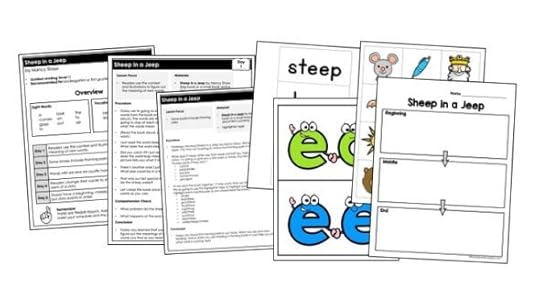
Sheep in a Jeep,��by Nancy Shaw, is a great book to teach beginning, middle, and end.
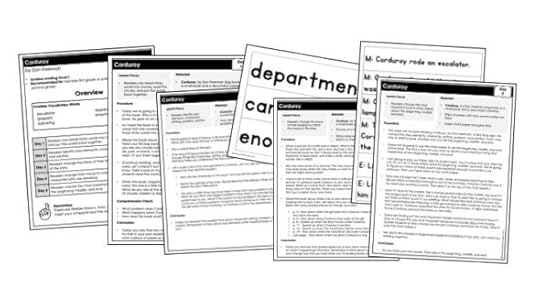
Corduroy,��by Don Freeman, is ideal for teaching basic story elements (characters, setting, problem, and solution).
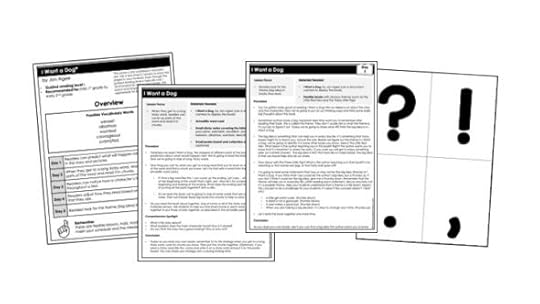
In my lessons for I Want a Dog,��by Jon Agee, I focused on predicting skills as well as tracking a character’s feelings throughout a story.
You can focus on many different comprehension skills and strategies during shared reading. Here are a few more!
Making connections
Inferring
Summarizing
Asking questions
Monitoring comprehension
Step 2 – Choose a day to focus on that comprehension skill or strategy.
I like to focus on comprehension at the beginning of the week if the skill is best taught on the first reading.
For example, it’s hard to teach predicting when students have already heard the book and know what’s coming next. So it makes sense to teach it at the beginning of the week.
Inferring is another skill that may work best at the first reading.
On the other hand, teaching your students about the beginning/middle/end, retelling, or summarizing a text may fit best at the end of your week’s lessons.
Step 3 – Integrate comprehension through all your lessons with both high and low level questions.
Even though you will choose one or two days to focus heavily on comprehension, it’s important to include it in all your lessons. After all, what’s the point of our phonics and fluency skills if we don’t understand what we’re reading?
What can you tell about the book by looking at the cover?
What can you see in this picture that helps you understand the story?
What happened first/next/last?
Does this book remind you of anything that’s happened to you?
What is one new thing you noticed about the story today?
How was the problem solved in the story?
What’s another way the character could have solved the problem?
What’s the most important thing the author wants you to know? (for a nonfiction text)
What did you already know about this topic? What did you learn?
How do the illustrations help you understand this topic better?
Step 4 – As time allows, include creative comprehension activities at the end of the week.
Distribute pictures from the text that represent the beginning, middle, and end. Have students use them to retell the story. (You can purchase a second (small) copy of the text, cut it apart, and laminate pictures for this activity.)
Write story events on sentence strips. Then have students help you put them in order on a pocket chart.
Help students act out the story.
Create a story map as a class.
Have students illustrate the beginning, middle, and end.
Create a new story based on the original during a shared writing lesson.
Have you seen the whole shared reading series?
��Part 1 ��Part 2 ��Part 3 ��Part 4 ��Part 5
And check out the mini-course
in The Measured Mom Plus!

Log in to your account at The Measured Mom Plus and view my mini-course about shared reading.
Learn exactly what to teach during shared reading lessons.
Find out how to keep the same text from getting boring.
Get 5-day shared reading lesson plans for multiple books and grade levels!
© 2020, Anna G. All rights reserved.
The post How to teach comprehension during shared reading appeared first on The Measured Mom.
January 18, 2020
Enter my mega give-away!
Did you know that I wrote my first post on The Measured Mom in January of 2013?
That’s right! The Measured Mom is 7 years old.
To celebrate I’m giving seven people a full year’s subscription to The Measured Mom Plus!
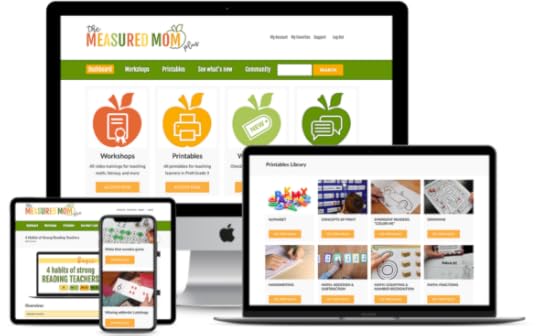
What will you get as a member?
Access to short, actionable video trainings about teaching in PreK-Grade 3
Get new trainings each month (with printable certificates of completion!).
No time to watch videos? No problem! Moving forward, each training will include the following:
Short videos that you can set to autoplay one after the other
A printable written transcript of the videos
A downloadable audio file that you can put on your phone or another device and listen to anywhere!
New printables each month for teaching literacy and math in PreK-Grade 3
Printables include items such as …
learning centers
write the room activities
activity sheets
reading passages
partner plays
shared reading lessons
interactive read aloud lessons
CLICK HERE TO PEEK AT ALL THE PRINTABLES MEMBERS HAVE RECEIVED SO FAR!
One-click ads-free printable library
Browse the library and download any member printables (plus freebies from the main site) with a single click! (no entering your email address, and NO ADS!)
Community support in a members-only Facebook group
Ask questions, get advice, and submit requests for future trainings and printables in our private Facebook group.
Get support and encouragement from educators who share your passion for teaching.
ENTER TO WIN BELOW!
I will choose 7 winners on Sunday, January 26.
Please note that entrants will be disqualified if they do not answer all 3 questions as listed in the widget below.
© 2020, Anna G. All rights reserved.
The post Enter my mega give-away! appeared first on The Measured Mom.
How to teach phonics during shared reading
Shared reading is a wonderful vehicle for teaching all kinds of reading skills and strategies … including phonics. In today’s post I’m sharing a simple process for teaching phonics skills and decoding strategies during shared reading.
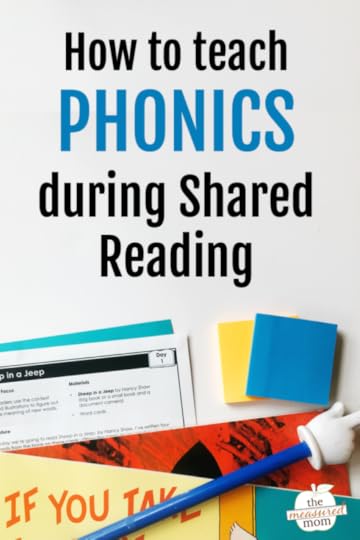
Have you been following along in my series about shared reading?
In Week One, I explained what shared reading is.
Last week, I gave you an editable shared reading lesson template .
Today I’d like to show you how you can use your shared reading lessons to teach phonics patterns, using a simple 3-step process.
How to use shared reading to teach phonics patterns
Step 1 – Identify phonics skills/patterns that you can pull from the text.
Read through the text, and see if you find any phonics patterns that are repeated at least 2-3 times and��that your students would benefit from learning.
Examples:
CVC words
CVVC words (words with ee, ea, oo, etc.)
Word endings (s, -es, ing, etc.)
Words with prefixes or suffixes
Other multi-syllable words
Step 2 – Choose a day to focus on that phonics pattern.
Remember that we should do shared reading 3-5 days a week.
I usually prefer to focus on the phonics skill toward the beginning of the week (usually on the second lesson). My reason for this is is that children are still learning the text at the beginning of the week and are likely to be doing more word-solving than they will do at the end of the week. (I like to save fluency and more advanced comprehension for the end.)
Step 3 – Decide how you will focus on the phonics pattern, both in and out of the text.
My preference is to highlight that phonics pattern while reading, but then to��take it out of the text for isolated practice. Then return back to the text to read words with that pattern in context.
For example, you can use��Sheep in a Jeep to teach learners that��ee and��ea make the long e sound.
Notice and highlight words with that pattern in the text. You can use highlighter tape or Wikki Stix.
Then take the skill out of the text by helping students read cards with words that have those patterns. Another option is to give students word cards to read and sort (perhaps contrasting CVC short e words and CVVC ee�� or ea words).
Finally, read the text again, encouraging students to remember to read��ee and��ea words with a long e sound.
How to use shared reading to teach decoding skills
We can also use our phonics skills to decode words. Use this 3-step process for teaching decoding during shared reading.
Step 1 – Identify words that will help you teach a particular decoding skill.
This is going to vary depending on the ability of your learners and the level of book you are using. For example, we want our youngest readers (reading at levels A-C, for example) to use the first letter of a word to help them solve it. But as students build up their phonics knowledge, we leave this skill behind.
Here are some decoding skills you might teach (not a full list!):
Use the first letter of the word and the picture to help you figure out a tricky word.
Back up and reread a tricky word when your reading doesn’t make sense.
Check the first and last letters of a tricky word.
Blend the sounds in a short word.
Look for chunks you know in a tricky word.
Take a big word apart into chunks; read each chunk and put them together to make the word.
If you get stuck, skip a tricky word and read to the end of the sentence. Then go back and try again.
Cover the word ending; read the word without the ending, and then add it back on.
Step 2 – Choose a day to focus on that decoding skill.
I would teach that decoding skill on the first or second day. You want to teach it when the text is fresh so that students actually have to decode the word (instead of remembering what it was from a previous day’s reading).
Step 3 – Decide how to teach the decoding skill.��
You are going to want to read the text together at a slow enough pace that you are not jumping ahead of your students and solving all the tricky words for them.
One way to slow yourself down is to cover those tricky words with sticky notes until you get to them. Then reveal the words as you reach them, and teach your students a particular decoding skill as you solve it together.
You might also take the decoding skill out of the text by putting words (or sentences, depending on the skill) on slips of paper. Guide students as they read the tricky words in pairs. Then return to the text one more time before the lesson is over.
Stay tuned for more about shared reading!
<
��Part 1 ��Part 2 ��Part 3 ��Coming January 28 ��Coming February 4
And check out the mini-course
in The Measured Mom Plus!

Log in to your account at The Measured Mom Plus and view my mini-course about shared reading.
Learn exactly what to teach during shared reading lessons.
Find out how to keep the same text from getting boring.
Get 5-day shared reading lesson plans for multiple books and grade levels!
© 2020, Anna G. All rights reserved.
The post How to teach phonics during shared reading appeared first on The Measured Mom.
January 12, 2020
Free EDITABLE shared reading lesson plan template!
As you plan your shared reading lesson plans, it’s helpful to have a template. In today’s post you can download an editable one … for free!
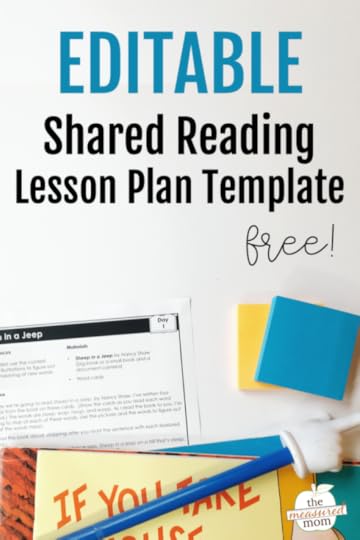
Did you read last week’s blog post all about shared reading?
If you did, you’re ready to start writing your shared reading lessons.
One question remains.
What do shared reading lesson plans look like from day to day?
I recommend creating lessons that use the same text for 3-5 days.
While definitely not required, you might choose to have a pattern for your lessons.
One way to structure your 5-day shared reading lessons
Day 1 – Introduce and read the text; teach vocabulary.
Day 2��– Teach a related phonics skills.
Day 3 – Focus on comprehension.
Day 4 – Build fluency.
Day 5 – Do a fun reading response.
One way to structure your 3-day shared reading lessons
Day 1 – Introduce and read the text; focus on comprehension.
Day 2��– Teach a related phonics skills.
Day 3 – Focus on fluency.
How do you know what to teach in your lessons?
Like any other reading lesson you teach, this is going to depend on the level of your students and the particular text you’ve chosen.
For example, if I am teaching kindergartners who are mostly pre-readers, I will choose a very simple text (GRL B or C). If possible, I will use a Big Book to teach things like concepts of print, recognizing punctuation, identifying letters, etc. We will practice reading the book together a��lot.
On the other hand, if I am teaching second graders who are starting to read chapter books, I might put a chapter book from a familiar series under the document camera. We will focus heavily on comprehension, and we will likely do very little choral reading of the text.
How do you keep track of what you’ve taught?
Many years ago, I went to a conference in which the presenter told us to attach a long strip of adding machine tape to the wall next to our shared reading center. She advised us to teach things as they came up during shared reading, and jot down the skills with the date on the adding machine tape.
This way we could keep track of everything we’d taught during shared reading.
For years I thought that was the way I was supposed to do shared reading … teach whatever I thought of as it came up, and jot it down��after the fact.
No wonder I had a hard time sticking with shared reading!
Don’t try to do shared reading on the fly.
Plan in advance what you will teach, and develop a simple system for keeping track of the skills/standards you’ve addressed.
Download your EDITABLE shared reading lesson template below.
Stay tuned for more about shared reading!
��Part 1 ��Coming January 14 ��Coming January 21 ��Coming January 28 ��Coming February 4
And check out the mini-course
in The Measured Mom Plus!

Log in to your account at The Measured Mom Plus and view my mini-course about shared reading.
Learn exactly what to teach during shared reading lessons.
Find out how to keep the same text from getting boring.
Get 5-day shared reading lesson plans for multiple books and grade levels!
© 2020, Anna G. All rights reserved.
The post Free EDITABLE shared reading lesson plan template! appeared first on The Measured Mom.
January 9, 2020
Free reading comprehension passages for early readers!
Enjoy this set of free reading passages for young readers!
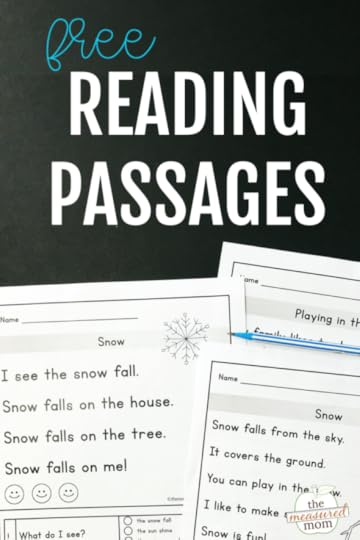
Without a doubt, one of the biggest requests I get at The Measured Mom is for simple reading passages for young readers.
I love to create reading passages, but they take a lot of time.
Because of that, I’ve started sharing new reading passages every month on my paid membership site.
Here’s a free sample so you can get a taste of what members get every month (in addition to��many other printable resources!).
Each set of early reading passages comes in three different levels.
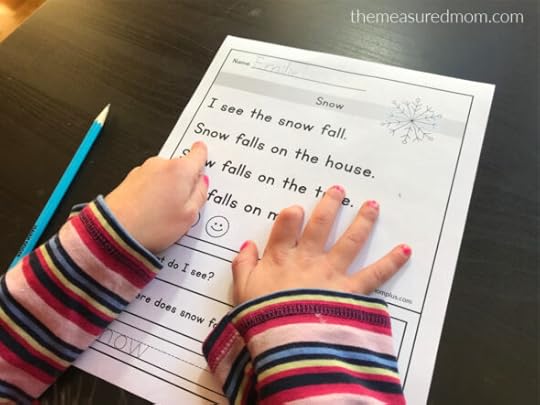
My kindergartner enjoyed the simplest passage and read it easily.
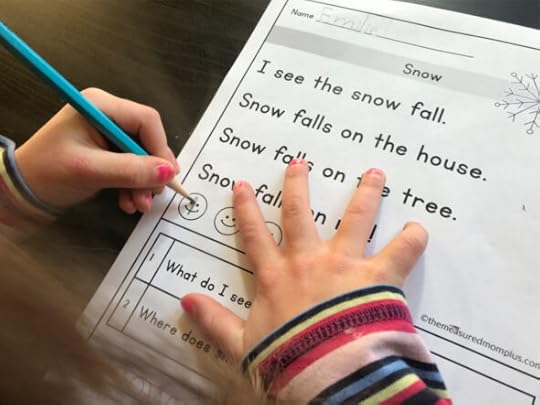
Every time she read the passage, she colored one of the smiley face circles. (Rereading builds fluency!)
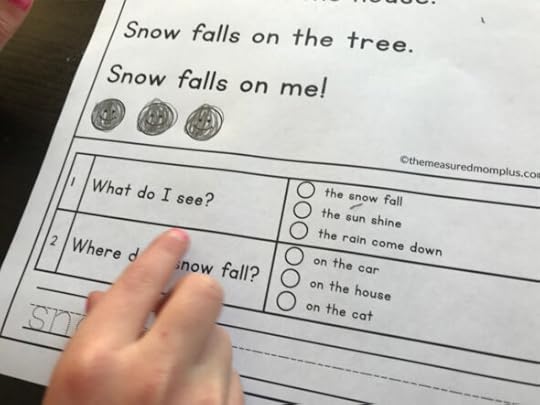
Next, I helped her answer the questions at the bottom of the page.
Finally, she traced the vocabulary word (“snow”) and wrote it twice in her best handwriting.
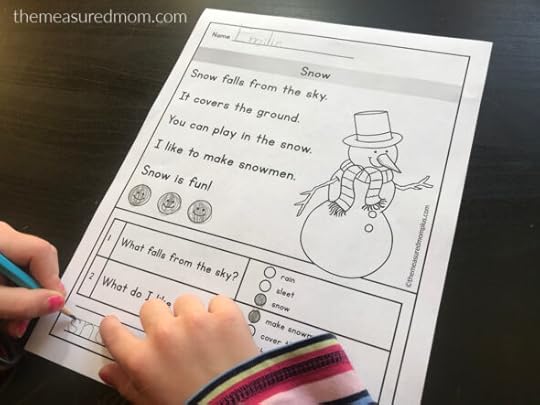
She did well with the level 2 passage as well, although she needed help with the word “covers.”
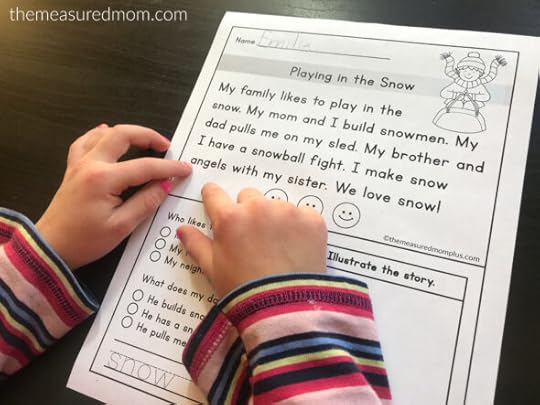
The level 3 passage was at her frustration level, and she didn’t enjoy it. For her second reading, we read it chorally (at the same time) to boost her confidence. If I was using these with her in the classroom, I’d have her do the level 2 page.
How to use these passages
Use them with individuals or small, ability-based reading groups.
Encourage your learners to use their word solving skills when they come to tricky words.
Find a part of the word you know.
Read the first chunk and see if you can add the rest of the word.
What would make sense?
Say all the sounds in order.
Teach your students how to read the question��and all the possible answers before choosing the correct one.
Consider completing these at school and sending them home for more practice.
After you have done the passages with your learners, you might place them at a fluency center so students can read the passages again (alone or in pairs).
Enjoy your free set of passages!
Have you checked out
The Measured Mom Plus?

Get one-click access to hundreds of printables, including
Alphabet printables
Grammar games and task cards
Phonics resources
Reading passages
Partner plays
Quick video trainings
and so much more!
© 2020, Anna G. All rights reserved.
The post Free reading comprehension passages for early readers! appeared first on The Measured Mom.
January 6, 2020
What is shared reading?
What is shared reading, and what are its benefits? Get answers to these questions and more in today’s post!
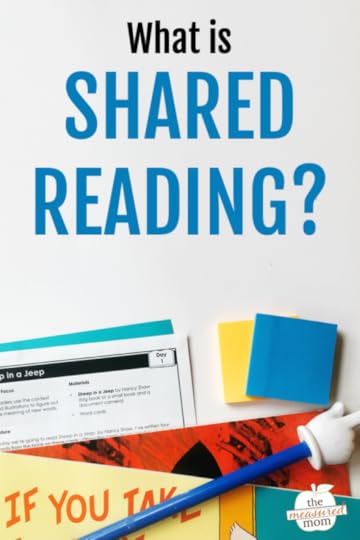
If you’re little fuzzy on shared reading – or you want to make sure you’re on the right track, this post is for you.
Let’s tackle some common questions.
What is shared reading?
Shared reading is when a teacher and a large group of students read an enlarged text��together.
There is��one copy of the text, and it’s big enough that everyone can see it.
How is it different than guided reading?
Quite a bit.
Guided reading is always done with small groups who are at a similar reading level. While shared reading��may be done with small, ability-based groups, we typically do shared reading with a large group of learners at all different levels.
With guided reading, each students gets his/her own copy of the text. Shared reading works best when everyone shares the same (enlarged) text.
During guided reading lessons, each child reads the text��on his/her own. In contrast, shared reading usually involves all learners��reading the text in unison.
Both guided and shared reading have an importance place in a balanced literacy model.��
What age/grade levels should do shared reading?
I recommend doing shared reading starting at the PreK level and going all the way through mid-elementary school.
I believe it is��most valuable at the K-2 level.
What do you read during shared reading?
I recommend choosing a text that is 1-2 levels above the average reading level of your group. This way the text provides a small challenge as you work with it throughout the week.
Your text could be …
a poem or other text written on chart paper
a poem written on sentence strips in a pocket chart
a Big Book
any text enlarged with a document camera
What are the benefits of shared reading?
Here are just a few reasons to make shared reading a regular part of your school days.
Shared reading …
encourages enthusiasm for reading
builds book and print awareness
supports students at all reading levels
introduces students to different genres
gives practice with word solving skills
provides an opportunity to teach comprehension strategies
provides a platform for modeling and building fluency
How often should you do shared reading?
With all those benefits, you’d think that shared reading is going to eat up a lot of your day.
But it won’t!
You only need to set aside 10-15 minutes 3-5 days a week.
Stay tuned for more about shared reading!
��Part 1 ��Coming January 14 ��Coming January 21 ��Coming January 28 ��Coming February 4
And check out the mini-course
in The Measured Mom Plus!

Log in to your account at The Measured Mom Plus and view my mini-course about shared reading.
Learn exactly what to teach during shared reading lessons.
Find out how to keep the same text from getting boring.
Get 5-day shared reading lesson plans for multiple books and grade levels!
© 2020, Anna G. All rights reserved.
The post What is shared reading? appeared first on The Measured Mom.
Anna Geiger's Blog
- Anna Geiger's profile
- 1 follower


